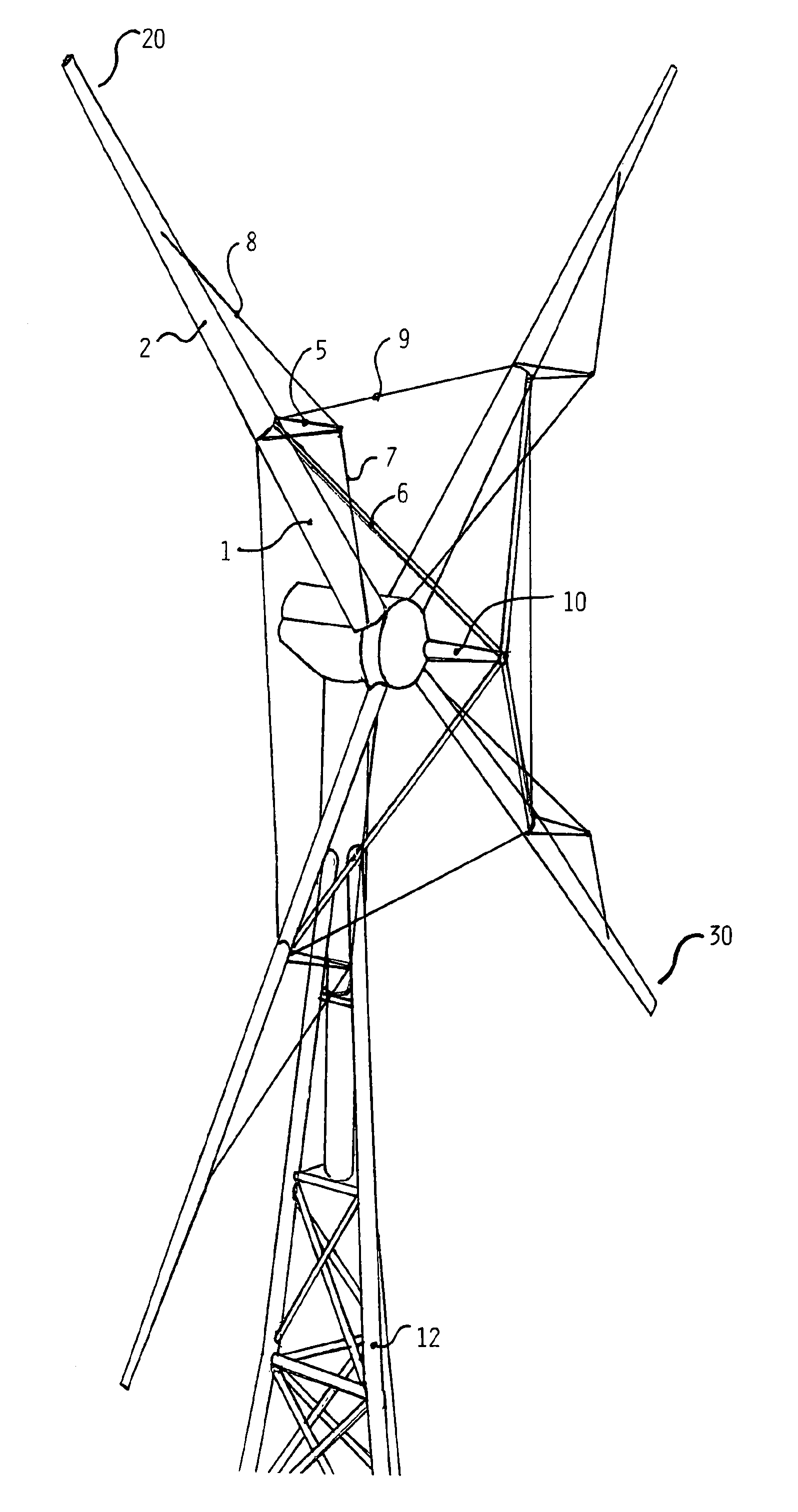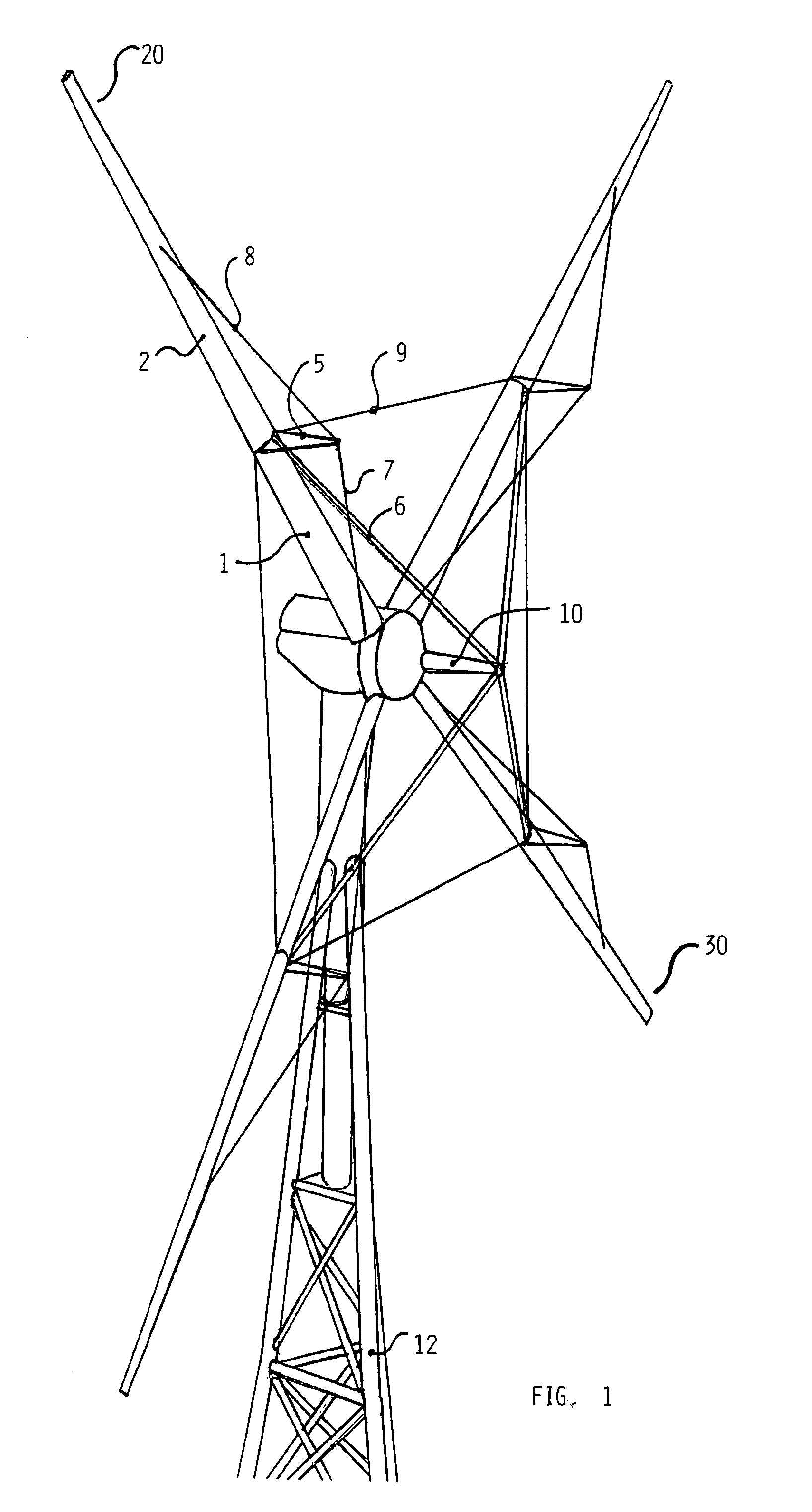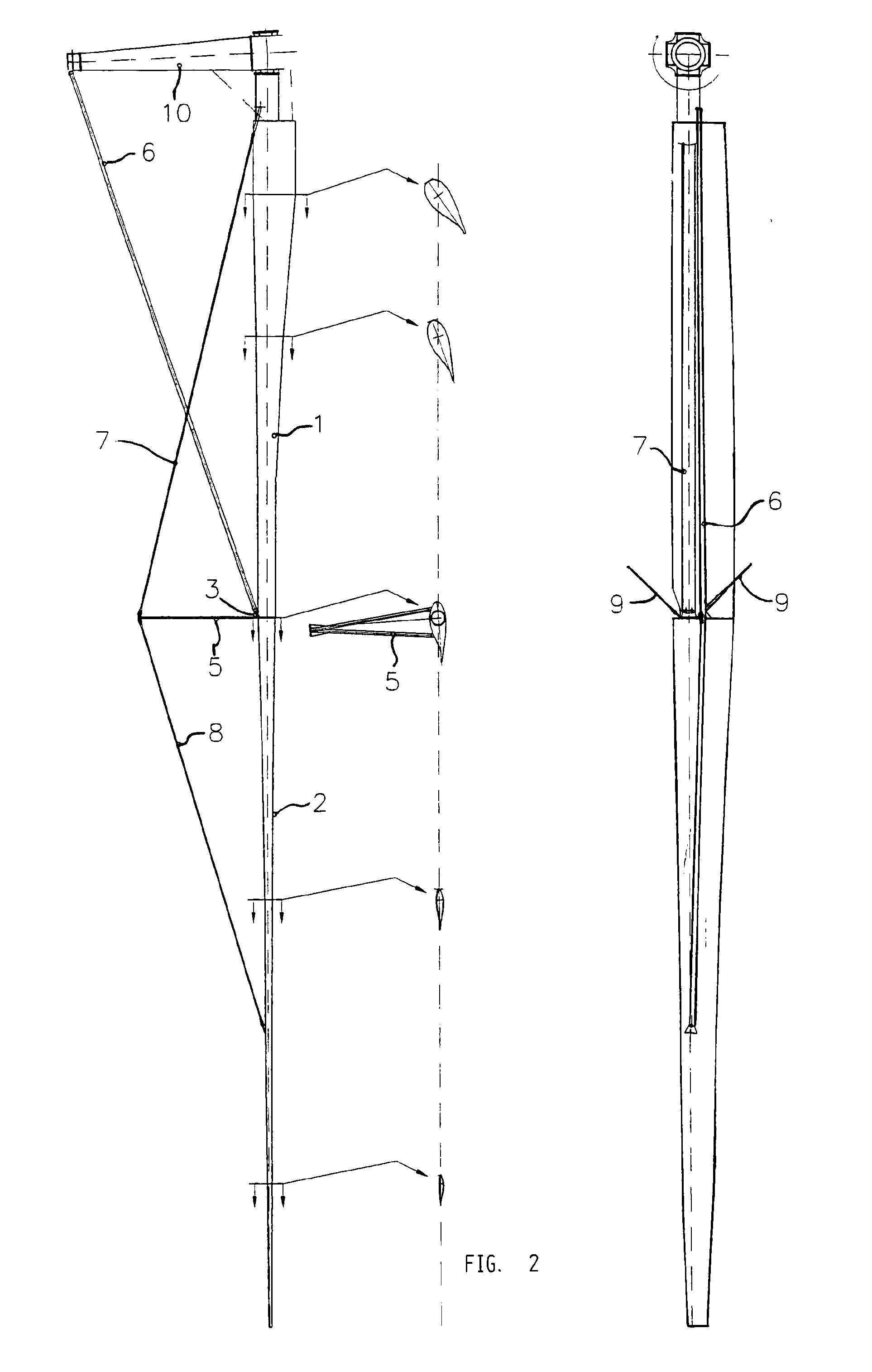Wind turbine rotor
a wind turbine and rotor blade technology, applied in the field of wind turbine rotors, can solve the problems of affecting the development of larger installations, and affecting the placement of structures in the landscape,
- Summary
- Abstract
- Description
- Claims
- Application Information
AI Technical Summary
Benefits of technology
Problems solved by technology
Method used
Image
Examples
Embodiment Construction
[0042]An embodiment example of a wind power plant rotor with two-piece rotor blades (20, 30) according to the invention is described with reference to the figures.
[0043]FIG. 1 presents a wind mill with tower (12) and wind power plant rotor according to the invention. The wind power plant rotor comprises a rotor shaft (10), four rotor blades (20, 30) each of which comprises two rotor blade parts (1, 2), and a number of stiffening elements (5-9) including radial blade stiffening elements (7 and 8) and tangential rotor stiffening elements or ring stiffening (9), and rotor shaft strut.
[0044]FIGS. 2 and 3 present a two-piece rotor blade (20, 30) with corresponding joining and stiffening elements. In this embodiment example each rotor blade comprises an inner (1) and an outer rotor blade part (2) divided in two somewhat on the inner side of the middle of the rotor blade. The rotor blade parts (1, 2) are held together by joining elements in the form of a tubular connection (11) which exten...
PUM
 Login to View More
Login to View More Abstract
Description
Claims
Application Information
 Login to View More
Login to View More - R&D
- Intellectual Property
- Life Sciences
- Materials
- Tech Scout
- Unparalleled Data Quality
- Higher Quality Content
- 60% Fewer Hallucinations
Browse by: Latest US Patents, China's latest patents, Technical Efficacy Thesaurus, Application Domain, Technology Topic, Popular Technical Reports.
© 2025 PatSnap. All rights reserved.Legal|Privacy policy|Modern Slavery Act Transparency Statement|Sitemap|About US| Contact US: help@patsnap.com



